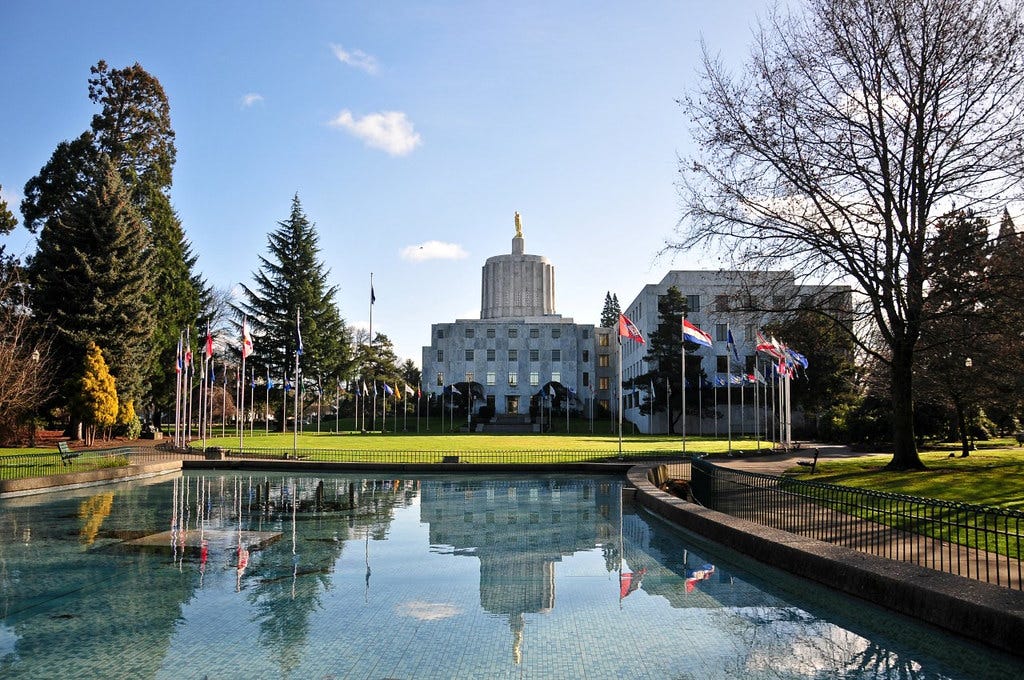PERS is Coming for Oregon’s Next Governor
Nesbitt, who served as Governor Kulongoski's chief of staff, explains the recent political history of Oregon's pension system for public employees and the next governor's inevitable task to fix it
Every Oregon governor during the past three decades has had to wrestle with the Public Employees Retirement System, better known as PERS. So too will the next governor we elect in November.
Despite multiple cycles of reforms, PERS keeps getting back on its feet, squeezing public budgets and forcing a rematch, which our next governor will be unable to avoid.
These political wrestling matches are never pretty. Public employees and retirees have a big stake in the outcome. They’re more organized and yell louder at these matches than school kids and those of all ages who rely on public funding for critical services, which is pretty much all Oregonians. We all have a stake in these matches.
But monthly pay and retirement checks are personal. Biennial budgets, not so much. So, our elected officials are in a tough spot when trying to get their arms around a system that has sworn to keep its promises to retirees but needs increasingly larger shares of public funding to do so.
The problems with PERS have been threefold -- design flaws that drove benefits to the breaking point, a Supreme Court that flashed confusing signals about the rules for reversing the system’s excesses, and a financing structure that periodically applies a stranglehold to public budgets. By the late 1990s and early 2000s, those problems threatened to drive up employer payments to maintain the system’s benefits from 12% to more than 30% of payroll.
The first two of these problems are now largely solved. Former Governors John Kitzhaber and Ted Kulongoski managed to cut off enrollments in the PERS plans that had driven up payouts to retirees far in excess of what the system was designed to deliver. With legislation enacted in 1995 and 2003, new employees were enrolled in more affordable, but still generous, benefit plans.
These interventions restored certainty and affordability to the system, but only temporarily. The recession of 2008 decimated PERS’ reserves for future benefits. Payroll costs climbed steeply again in order to make up the difference. And, Kitzhaber back in the governor’s office for a third term, reluctantly took PERS to the mat one last time with legislation to dial back retirees’ cost-of-living benefits. “I’m done with PERS,” Kitzhaber said, after signing the legislation.
But PERS wasn’t done with us. The Oregon Supreme Court blew the whistle on the major elements of the Kitzhaber legislation, leaving his successor, Gov. Kate Brown, to enter the fray yet again.
Brown had to act, for two reasons. As PERS demanded larger shares of public payrolls, it not only strained budgets, it complicated efforts to raise taxes on businesses to improve funding for K-12.
And, Brown had an advantage that Kitzhaber didn’t have, namely a clear set of rules from the Supreme Court ruling on the Kitzhaber legislation that clarified what could legally be done to control PERS costs: Any modification of benefits or shifts to employee cost sharing has to be prospective.
With these rules established and the opportunity to package PERS reform with revenue reform, Brown supported legislation enacting modest changes to PERS benefits on a going forward basis. She signed the legislation in 2019. The Supreme Court deemed it fair play a year later.
So, are we done with PERS? Not for long.
The sharp decline in the value of PERS investments this year and the inflationary pressure on wages have created the equivalent of a “leg-trap camel clutch” (yes, that’s a wrestling term) for the system. In the PERS pension formula, higher wages generate higher benefits. In its financing scheme, lower returns on investments have to be made up with higher contributions from employers. Combine the two, and it looks like another wrestling match over PERS costs will have to be scheduled at some point in the next governor’s term, when payroll rates are likely to again approach 30% of payroll.
Both Tina Kotek, the Democratic nominee for governor, and Betsy Johnson, an unaffiliated candidate, not only voted for the 2019 PERS legislation as members of legislature, but were instrumental in guiding it through their respective chambers. Christine Drazan, the Republican candidate for governor, who was then the House Minority leader, led her caucus in a unanimous no vote. They all know what it means to be on the mat with PERS.
Still, none of the three candidates for governor is bragging about her vote in 2019. They’d all rather avoid the subject while campaigning for the job. But PERS is coming for the winner. It’s only a matter of time.






Legislators won't be happy until they scrap the whole system just like they did to the private pension system in this country. Unions won't be happy, but corporations will laugh all the way to their wholly-owned banks...